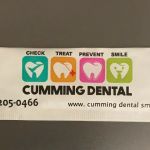- 1-Early-Warning-Signs-of-Oral-Cancer
- 2-Understanding-the-Importance-of-Early-Detection
- 3-Common-Signs-and-Symptoms-to-Watch-For
- 4-Diagnostic-Procedures-for-Oral-Cancer
- 5-Real-Life-Stories-and-Expert-Advice
- 6-How-to-Respond-if-You-Notice-Early-Signs
1. Early Warning Signs of Oral Cancer
Recognizing signs of oral cancer early warning signs and detection is critical to improving outcomes and survival rates. Oral cancer can develop in any part of the mouth, including the lips, tongue, cheeks, gums, roof, and floor of the mouth. Early detection often hinges on being aware of subtle changes in your oral health that might otherwise go unnoticed.
Typical early signs include persistent sores or ulcers that do not heal within two weeks, white or red patches on the lining of the mouth, unexplained bleeding, and lumps or thickened areas in the tissues. These signs can be painless initially, which often leads people to delay seeking medical attention.
Other early symptoms can include difficulty swallowing, a persistent sore throat, numbness, or a feeling of something caught in the throat. Being attentive to these early warning signs can prompt timely consultation and diagnosis.
2. Understanding the Importance of Early Detection
Early detection dramatically increases the chances of successful treatment for oral cancer. When caught in its initial stages, treatment tends to be less invasive and more effective, reducing complications and improving quality of life. The American Cancer Society reports that the five-year survival rate for localized oral cancer exceeds 80%, but this drops significantly if the cancer spreads.
Regular dental checkups are an essential part of early detection. Dentists are trained to identify suspicious lesions and can perform oral cancer screenings during routine visits. These screenings are painless, quick, and can save lives by catching cancer before symptoms become severe.
3. Common Signs and Symptoms to Watch For
Understanding the most common signs helps you remain vigilant. Some of these include:
1. Persistent Mouth Sores
Sores or ulcers that linger beyond two weeks without healing are red flags that require professional evaluation.
2. White or Red Patches
Leukoplakia (white patches) and erythroplakia (red patches) can signal abnormal tissue changes that may progress to cancer.
3. Lumps or Thickening
Feeling lumps or rough areas inside the mouth or on the lips that don’t go away can indicate abnormal cell growth.
4. Unexplained Bleeding or Numbness
Bleeding without injury or numbness in any area of the mouth should prompt immediate medical advice.
5. Difficulty Swallowing or Speaking
Changes in speech or pain while swallowing can be symptoms of a developing oral tumor.
4. Diagnostic Procedures for Oral Cancer
If any early warning signs are present, your healthcare provider may recommend several diagnostic tests. These include:
1. Visual and Physical Examination
Careful inspection of the mouth and throat to locate suspicious areas.
2. Biopsy
Removing a small tissue sample from the suspicious lesion to check for cancer cells under a microscope.
3. Imaging Tests
CT scans, MRIs, or PET scans may be used to determine the extent and location of the cancer.
Early diagnosis through these procedures facilitates prompt treatment planning, which is crucial to prevent cancer progression.
5. Real-Life Stories and Expert Advice
Consider the story of Linda, a 47-year-old woman from Ohio, who discovered a small white patch on her tongue during routine brushing. She initially dismissed it but recalled learning about the signs of oral cancer early warning signs and detection during a dental visit. After consulting her dentist and undergoing a biopsy, she was diagnosed with early-stage oral cancer. Immediate treatment led to a full recovery, highlighting the power of awareness and early action.
Experts emphasize that knowledge and proactive healthcare are your best defenses. Regular dental visits, combined with self-examinations, can empower you to detect problems early. Trusted sources like Dentistry Toothtruth provide comprehensive resources and services to assist in early detection and treatment.
6. How to Respond if You Notice Early Signs
If you observe any persistent symptoms or changes in your oral cavity, do not delay seeking professional advice. Schedule an appointment with a dentist or oral specialist immediately. Early consultation can lead to early diagnosis and treatment, significantly improving outcomes.
Additionally, adopting healthy lifestyle habits such as quitting tobacco, moderating alcohol consumption, maintaining oral hygiene, and eating a balanced diet can reduce your risk of oral cancer.
For personalized guidance and screening options tailored to your needs, consider visiting Dentistry Toothtruth, where expert care meets cutting-edge technology.







 Kremers, Forbes and Associates DDS5.0 (689 review)
Kremers, Forbes and Associates DDS5.0 (689 review) VCC: The Gary Center2.0 (45 review)
VCC: The Gary Center2.0 (45 review) Hassan Ismail5.0 (1 review)
Hassan Ismail5.0 (1 review) Open Door Family Medical Center- Sleepy Hollow4.0 (215 review)
Open Door Family Medical Center- Sleepy Hollow4.0 (215 review) Cumming Dental Smiles: Bethelview Road4.0 (529 review)
Cumming Dental Smiles: Bethelview Road4.0 (529 review) CJ Dental4.0 (13 review)
CJ Dental4.0 (13 review) The Importance of Oral Health Education During Pregnancy for a Healthy Pregnancy
The Importance of Oral Health Education During Pregnancy for a Healthy Pregnancy Best Tips for Brushing Your Teeth Properly for Healthy Gums: Essential Techniques for Oral Health
Best Tips for Brushing Your Teeth Properly for Healthy Gums: Essential Techniques for Oral Health Why Skipping Dental Checkups Can Lead to Bigger Oral Health Problems
Why Skipping Dental Checkups Can Lead to Bigger Oral Health Problems Advantages of Porcelain Dental Restorations
Advantages of Porcelain Dental Restorations How Can Diabetes Cause Tooth and Gum Problems? Preventing and Managing Oral Health Issues
How Can Diabetes Cause Tooth and Gum Problems? Preventing and Managing Oral Health Issues Healthy Habits for Promoting Good Oral Health and Hygiene: Tips for a Healthy Smile
Healthy Habits for Promoting Good Oral Health and Hygiene: Tips for a Healthy Smile